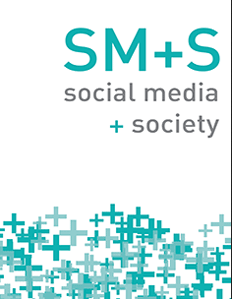In the Mood for Likes: A Longitudinal Study of Civil Society Organizations’ Emotional Communication on Social Media
IF 4.9
1区 文学
Q1 COMMUNICATION
引用次数: 0
Abstract
Emotional communication, especially through social media platforms, has become a contemporary populist threat. While this phenomenon has been studied in for example news media and social movements, we know less about its influence on civil society organizations, despite their pluralism being a centerpiece in a vibrant democracy. More specifically, we do not know if social media make civil society organizations more isomorphic and thus decreasing the diversity of their emotional communication over time. This question is relevant given the broad range of organizational fields that civil society engages in, as well as the documented push toward especially extreme positivity on social media platforms. Given this background, the article explores the use of positive and negative sentiment, as well as of sentiment intensity, over time in the social media communication of different organizational fields of civil society. We employ sentiment analysis to analyze approximately 100,000 organizational posts on Facebook from 125 Swedish nonprofit organizations during 2015–2020. We find that the pluralism of civil society organizations across different fields, as regards emotional communication, is retained over time, thus not threatening the pluralism of civil society in this way. In addition, emotional communication, and especially positivity, increases over time in all fields in absolute terms. However, considering post length, the relative amount of emotional communication exhibits less of an increase. Rather, across all fields there is an unexpected isomorphism relating to posts becoming longer, while enticing less user engagement. This development, rather than the lack of pluralism, raises democratic concerns.喜欢的心情:民间社会组织在社交媒体上情感交流的纵向研究
情感交流,尤其是通过社交媒体平台的情感交流,已经成为当代民粹主义的威胁。虽然这一现象已经在新闻媒体和社会运动等领域进行了研究,但我们对其对民间社会组织的影响知之甚少,尽管它们的多元化是一个充满活力的民主国家的核心。更具体地说,我们不知道社交媒体是否使公民社会组织更加同构,从而随着时间的推移减少了他们情感交流的多样性。鉴于公民社会参与的组织领域范围广泛,以及在社交媒体平台上有记录的对极端积极的推动,这个问题是相关的。在此背景下,本文探讨了积极情绪和消极情绪以及情绪强度随时间在公民社会不同组织领域的社交媒体传播中的使用情况。我们使用情感分析来分析2015-2020年期间来自125个瑞典非营利组织在Facebook上发布的大约10万个组织帖子。我们发现,在情感交流方面,不同领域的公民社会组织的多元性随着时间的推移而保持不变,因此不会以这种方式威胁到公民社会的多元性。此外,情感交流,尤其是积极性,在所有领域都随着时间的推移而增加。然而,考虑到帖子长度,情感交流的相对数量表现出较少的增长。相反,在所有领域都存在一种意想不到的同构现象,即帖子越来越长,而吸引的用户参与度却越来越低。这种发展,而不是缺乏多元化,引起了人们对民主的关切。
本文章由计算机程序翻译,如有差异,请以英文原文为准。
求助全文
约1分钟内获得全文
求助全文
来源期刊

Social Media + Society
COMMUNICATION-
CiteScore
9.20
自引率
3.80%
发文量
111
审稿时长
12 weeks
期刊介绍:
Social Media + Society is an open access, peer-reviewed scholarly journal that focuses on the socio-cultural, political, psychological, historical, economic, legal and policy dimensions of social media in societies past, contemporary and future. We publish interdisciplinary work that draws from the social sciences, humanities and computational social sciences, reaches out to the arts and natural sciences, and we endorse mixed methods and methodologies. The journal is open to a diversity of theoretic paradigms and methodologies. The editorial vision of Social Media + Society draws inspiration from research on social media to outline a field of study poised to reflexively grow as social technologies evolve. We foster the open access of sharing of research on the social properties of media, as they manifest themselves through the uses people make of networked platforms past and present, digital and non. The journal presents a collaborative, open, and shared space, dedicated exclusively to the study of social media and their implications for societies. It facilitates state-of-the-art research on cutting-edge trends and allows scholars to focus and track trends specific to this field of study.
 求助内容:
求助内容: 应助结果提醒方式:
应助结果提醒方式:


